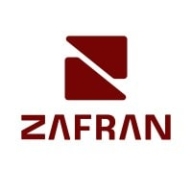


Fortra's Alert Logic MDR and Microsoft Defender Vulnerability Management are two prominent products in the cybersecurity category. Microsoft Defender seems to have the upper hand due to its robust integration and advanced functionalities, particularly appealing for businesses within the Microsoft ecosystem.
Features: Fortra's Alert Logic MDR offers real-time monitoring, intuitive threat detection, and responsive support, providing a comprehensive security overview. Microsoft Defender Vulnerability Management enhances security with strong integration, vulnerability assessments, and automation tools, offering seamless operations across platforms.
Room for Improvement: Fortra's Alert Logic MDR could improve in automation capabilities and integration with non-traditional platforms and may benefit from expanded vulnerability management features. Microsoft Defender might enhance its real-time monitoring effectiveness, broaden support beyond Microsoft environments, and offer more flexible customization options.
Ease of Deployment and Customer Service: Fortra's Alert Logic MDR ensures quick adaptation with a streamlined deployment process and consistent support. Microsoft Defender's deployment is straightforward due to native integration with Microsoft services, providing an advantage for existing users, coupled with strong support.
Pricing and ROI: Fortra's Alert Logic MDR features a flexible pricing structure aligned with scalable security options to ensure competitive ROI. Microsoft Defender Vulnerability Management offers cost-effective solutions with long-term ROI benefits through deep integration, which often justifies its initial costs for those relying on Microsoft-based environments.
| Product | Market Share (%) |
|---|---|
| Microsoft Defender Vulnerability Management | 2.7% |
| Zafran Security | 1.0% |
| Fortra's Alert Logic MDR | 0.6% |
| Other | 95.7% |



| Company Size | Count |
|---|---|
| Small Business | 4 |
| Midsize Enterprise | 2 |
| Large Enterprise | 6 |
| Company Size | Count |
|---|---|
| Small Business | 8 |
| Midsize Enterprise | 2 |
| Large Enterprise | 5 |
Zafran Security integrates with existing security tools to identify and mitigate vulnerabilities effectively, proving that most critical vulnerabilities are not exploitable, optimizing threat management.
Zafran Security introduces an innovative operating model for managing security threats and vulnerabilities. By leveraging the threat exposure management platform, it pinpoints and prioritizes exploitable vulnerabilities, reducing risk through immediate remediation. This platform enhances your hybrid cloud security by normalizing vulnerability signals and integrating specific IT context data, such as CVE runtime presence and internet asset reachability, into its analysis. No longer reliant on patch windows, Zafran Security allows you to manage risks actively.
What are the key features of Zafran Security?
What benefits can users expect from Zafran Security?
In industries where security is paramount, such as finance and healthcare, Zafran Security provides invaluable protection by ensuring that only exploitable vulnerabilities are addressed. It allows entities to maintain robust security measures while allocating resources efficiently, fitting seamlessly into existing security strategies.
Fortra's Alert Logic MDR specializes in threat detection and response with features like log access and user-friendly notifications. It is used primarily in extensive e-commerce deployments for network protection.
Fortra's Alert Logic MDR provides a unified interface with comprehensive search capabilities, immediate log access, and efficient reporting tools. Users benefit from accurate scanning, automated security warnings, and rapid response times, supported by SOCs for global visibility. The technology employs human expertise for enhanced threat detection and prevention, with a hardware setup designed to avoid virtual environment issues. However, there's a need for improved error tracing, intuitive navigation, and stronger analytical automation within the platform. Enhancements in setup documentation and user interfaces are desired, alongside demands for a built-in EDR and better alert management systems.
What are the key features of Fortra's Alert Logic MDR?Fortra's Alert Logic MDR is widely implemented across public and private sectors for robust network protection. It supports large-scale e-commerce operations, offering advanced detection capabilities with AI and machine learning. Security scanning, intrusion detection, and vulnerability analysis in Kubernetes are key applications.
Microsoft Defender Vulnerability Management enables organizations to identify vulnerabilities, manage patches, and fortify threat detection. It offers endpoint assessments, cloud incident management, and dynamic security through Microsoft's Security Scorecard integration.
Organizations leverage Microsoft Defender Vulnerability Management for advanced threat detection and response. It provides robust tools for vulnerability assessment and cloud incident management, integrated with Microsoft's Security Scorecard to enhance dynamic security profiling. Key features include automatic patch deployment, security configuration management, and seamless integration with Microsoft platforms, benefiting both on-prem and cloud environments. Organizations can track vulnerabilities with severity-based reports, helping manage outdated software and minimizing threat exposure.
What are the key features of Microsoft Defender Vulnerability Management?In healthcare, Microsoft Defender Vulnerability Management helps manage compliance with health regulations, while in finance, it aids in securing sensitive data from cyber threats. Manufacturing sectors benefit from its patch management, keeping operational technology systems less vulnerable to disruptions.
We monitor all Vulnerability Management reviews to prevent fraudulent reviews and keep review quality high. We do not post reviews by company employees or direct competitors. We validate each review for authenticity via cross-reference with LinkedIn, and personal follow-up with the reviewer when necessary.